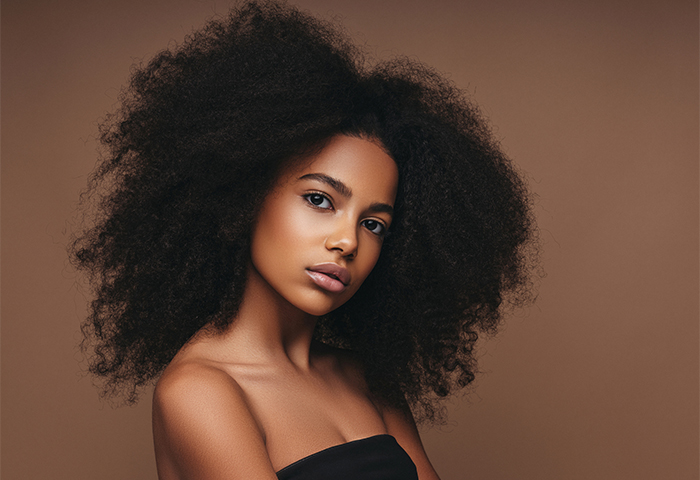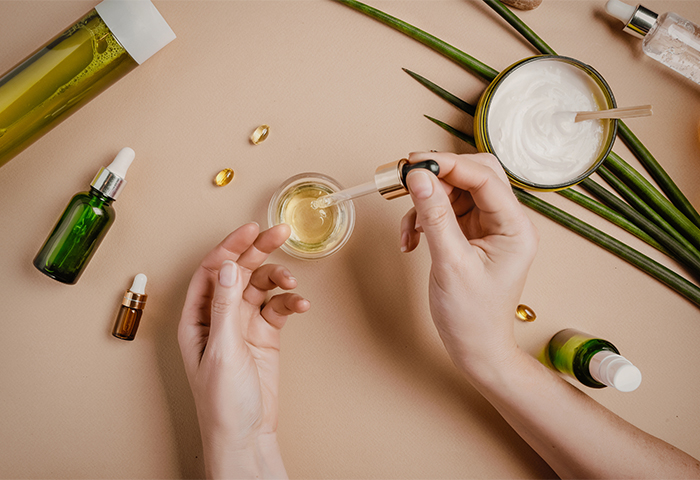
Image: Getty
Hair is a unique structure, and we all know, people of different origins and backgrounds have different curl textures, density, porosity, etc. In basic terms, curls can be defined as the dimension of the hair shaft, where the degree of twists varies significantly among an individual. With so many different natural hair textures out there, along with its own unique set of challenges, curls often get lumped into one broad category when it comes to products, but they vary greatly from head to head and deserve more careful categorization, plus but one size doesn’t fit all.
By now, it’s common knowledge that what might work great on your curly guru’s head might not automatically create the same effect on your own strands. That’s why we must expand our knowledge of hair products and hair care. With this knowledge comes the privilege to discern what works best for us individually.
We’ll focus on potential curly hair problems when it comes to formulation, ingredients, knowing when to stop using a product, and red flags on when to switch up your products.
Formulations
A typical conditioning wash product contains cationic surfactants blended with occasionally amphoteric cleansers and emollient oils. For example, a formula may contain cationic behentrimonium chloride along with grape seed oil and peppermint oil besides other ingredients. Similarly, another formula may contain two cationic cleansers cetrimonium chloride, and stearalkonium chloride formulated with coconut oil. So the approach is to employ cationic surfactants instead of anionics to do the cleansing job. As we know, in traditional shampoos, we have sodium lauryl sulfate, sodium laureth sulfate, ammonium laureth sulfate, and so on– these are anionic surfactants added to cleanse the hair. One of the key attractions for a consumer is ‘Sulfate-free because some conditioning cleansers do not contain any sulfated surfactants. Also, the oils or emollients added to the formulation are carefully selected to avoid any greasy or fatty build with repeated application.
Read more: Ingredients Commonly Found in Hair-care Products
Conditioning cleansers contain cationic surfactants that stay on the hair and are not rinsed off, which means that these products are in contact with the hair and scalp for more time than we usually have with traditional shampoos or other rinse-off products. That’s why it is to the utmost importance that emollient oils and cationic surfactants are blended in such a way that they don’t weigh down or cause any greasiness.
Most of these products have a positive impact and undoubtedly improved the quality of curly hair. However, it can become a major problem in the long run for some. In some cases, the issue has been so severe that it has caused serious scalp irritation, burning, red rashes, hair thinning, and even hair loss among the users. So what should we do know when to stop using a product? We need to analyze this more in detail. Before that, let’s first define the litmus test. How do we come to know that a product is not suitable for me?

Image: Getty
Litmus test: Stop using it immediately
The basics are straightforward. Every time we buy a new product, we must do its trial test. This is standard practice with professional hair coloring, bleaching, and straightening, and we need to follow the same example for consumer products as well. For instance, when trying a new curly hair product, use it for 2 to 3 applications with a small batch of hair. Carefully observe the results and, more importantly, monitor the scalp condition. Should you notice any redness, itchiness, or any discomfort, stop using the product immediately. This works as a litmus test that can help us in predicting the outcome and hence choosing the right product and treatment.
Ingredients we must avoid
Cosmetics are generally made up of synthetic chemicals. These chemicals are derived or sourced from petrochemicals, and thus, their safety must be established. Extensive research work has been published, and data is now available online for most of the ingredients used in hair care formulations, the same way, information is available online to assess the efficacy, performance as well as the safety of ingredients used in a formulation. We have heard a lot about paraben, phthalates, formaldehyde, and other preservatives.
PEG is polyethylene glycol; a synthetic polymer made up of the polymerization of ethylene glycol. It is commonly used as a thickening agent. PEG also helps in facilitating the penetration of active ingredients across the skin barrier. Interestingly, it can also trigger the penetration of harmful chemicals or contaminants that may get into the product by any means. More alarmingly, PEG containing ingredients may have small levels of 1,4-dioxane, which is a known carcinogenic and respiratory irritant. Some common examples are PEG-40 castor oil, PEG-75 lanolin, PEG-150 distearate etc. All of them have one symbolic point in common; their names all start with PEG, followed by a number which represents the number of moles of ethylene oxide used for ethoxylation.
Formaldehyde releasers
Formaldehyde is carcinogenic and is banned in all sorts of products. We all remember the story of Brazilian keratin treatments where formaldehyde was used to straighten hair. Consumers suffered severely due to its excessive use in such treatments. Once inhaled, its fumes may cause cancer. Various preservatives are actually formaldehyde releasers. They release formaldehyde over a period of time, and contact with the scalp is harmful. Among them are DMDM hydantoin, imidazolidinyl urea, and diazolidinyl urea.They all release formaldehyde over the period; hence should be avoided. With high concentrations, the result is thinning hair and eventually hair loss.
Cationic surfactants
They are an obvious choice for conditioning cleansers. Commonly used are cetrimonium chloride, behentrimonium chloride, etc. They offer hair conditioning and, at the same time, provide a cleansing effect as well. The question is, do these cationic surfactants cause any skin irritation? We are familiar with the tale of SLS, SLES, and other harsh anionic chemicals. What about cationic? The answer is cationic can be significantly irritating. Studies show that in fact, cationic surfactant has more irritation potential value for human skin compared to anionic and non-ionic surfactants.
Read more on Surfactants & Sulfates
In contrast to anionic detergents, they have a positively charged polar group. They are poor cleansers and do not lather well and are not compatible with anionic detergents, limiting their utility. However, they are excellent at imparting softness and manageability to chemically damaged hair, and so are primarily used as a daily shampoo for damaged hair such as in case of permanently dyed or chemically bleached hair.
Recap– As mentioned above, products containing cationic surfactants are generally left on hair (& scalp”> for some time. These cationic can be irritating, Also, other ingredients, such as PEG with 1,4-dioxane and preservatives with formaldehyde– when left on the hair shaft, they have a higher chance to come in contact with the scalp. As in the case of leave-on products, their contact time may be even higher. This exposure of scalp to these chemicals for a longer period of time actually may trigger undesired reactions leading to redness, irritation, itchiness, and subsequent hair loss problem.
How to access information about ingredients used?
Consumers are encouraged to examine the ingredient listing. There are different consumer forums and organizations that provide valuable information about these ingredients, their role in the formulation, and any potential discomfort they may cause. Some of them are listed below here:
References:
- Wolfram, L. J., Human hair: A unique physicochemical composite. J. Am. Acad. Dermatol. 2003, 48 (6, Supplement 1″>, S106-S114.
- Bernard, B. A., Hair shape of curly hair. J. Am. Acad. Dermatol. 2003, 48 (6, Supplement”>, S120-S126.
- Steinberg, D. C., Preservatives for Cosmetics. Allured Publishing Corporation: 1996.
Have some tips of your own to share? Drop them in the comments!
